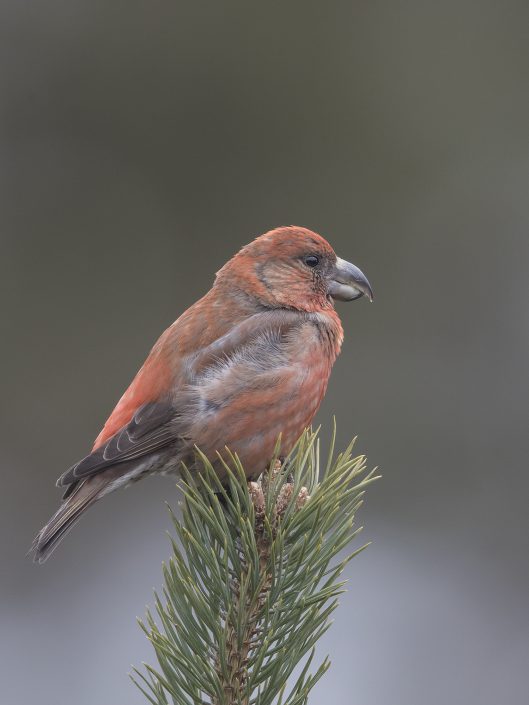This post is also available in: Swedish
Parrot crossbill – Loxia pytyopsittacus
Parrot crossbill – Loxia pytyopsittacus
The parrot crossbill (Loxia pytyopsittacus) is a small passerine bird in the finch family Fringillidae. The scientific name is from Ancient Greek. Loxia derives from loxos, “crosswise”, and pytyopsittacus is from pitus, pituos, “pine”, and psittakos, “parrot.
This bird breeds in the pine forests of northwest Europe and into western Russia. There is also a small population in Scotland, adding to the difficulty of distinguishing it from red crossbill and the endemic Scottish crossbill, both of which breed within its range.
This crossbill is mainly resident, but will irrupt south and west if its food source fails. This species will form flocks outside the breeding season, often mixed with other crossbills.
The crossbills are characterised by the mandibles crossing at their tips, which gives the group its English name. They are specialist feeders on conifer cones, and the unusual bill shape is an adaptation to assist the extraction of the seeds from the cone. The parrot crossbill is a specialist feeder on the cones of Scots pine.
Adult males tend to be red or orange in colour, and females green or yellow, but there is much variation.
This species is difficult to separate from red and Scottish crossbills, and plumage distinctions are negligible. It is slightly larger than other crossbills, measuring 16 to 18 cm (6.3 to 7.1 in) long and spanning 27 to 31 cm (11 to 12 in) across the wings. It is quite bulky and heavy weighing from 44 to 58.2 g (1.55 to 2.05 oz), with an average of 53 g (1.9 oz).
It sounds like this
Recording by Jelmer Poelstra from Xeno canto











